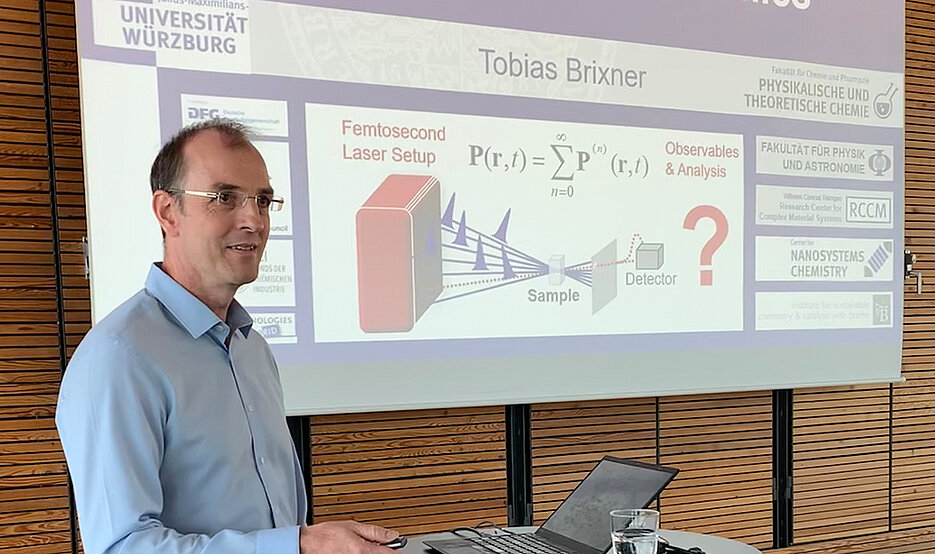Würzburg Professor at Nobel Symposium
08/11/2022Tobias Brixner, Professor of Physical Chemistry and Physics, was invited to the Nobel Symposium for Chemistry in Sweden. He spoke there about his research on multidimensional optical spectroscopy.

The annual announcement of the Nobel Prizes in October is always eagerly awaited by both the scientific community and the public. The Nobel Foundation selects the laureates in secret. For this purpose, the commission draws on suggestions from the scientific community.
To keep abreast of current scientific trends, the Nobel Foundation has been organising symposia since 1965. "The symposia are devoted to scientific fields in which groundbreaking developments are taking place or deal with topics of primary cultural or social importance," the Nobel Foundation says. In the past, some of the symposia have been indicators of fields in which Nobel Prizes were later awarded.
In 2019, the organisation of the Nobel Symposia has been transferred to the Royal Academy of Sciences of Sweden and the Norwegian Nobel Committee. The Academy holds two symposia annually, still funded by the Nobel Foundation, one each in physics and chemistry.
Award for the whole working group
After a one-year delay due to the covid pandemic, the Nobel Symposium in Chemistry, originally planned for 2021, now took place in Båstad, Sweden, from 7 to 11 August 2022. The topic was "Multidimensional Optical Spectroscopy" - which is the field of research of Würzburg professor Tobias Brixner. As an expert on the subject, he was invited to give a talk on his work at the Nobel Symposium.
"This invitation is a great honour," says Brixner, "and I am delighted to receive this award for our research, which is mainly due to the great commitment of the members of my research group." A total of 21 speakers from the narrower field were invited to the symposium and discussed the latest developments.
First steps of photosynthesis observed
Tobias Brixner has been head of the Chair of Physical Chemistry I at Julius-Maximilians-Universität (JMU) Würzburg since 2007. He studied physics in Würzburg and Albuquerque (New Mexico, USA) as part of an integrated stay abroad.
After his doctorate in 2001 in Würzburg with Professor Gustav Gerber in the field of femtosecond laser spectroscopy, he was a postdoctoral researcher in Berkeley (California, USA) for two years. There, together with Professor Graham Fleming and other colleagues, he developed a method of multidimensional spectroscopy of electronic excitations for coupled molecular assemblies. With this method, Brixner was able to observe for the first time in 2005 how the energy in a biological light-harvesting complex propagates spatially and temporally.
Since these findings on the first steps of photosynthesis, the field of application of the method has been greatly expanded. Hundreds of scientists worldwide now use multidimensional spectroscopy, which is gradually establishing itself as the standard.
Brixner himself has remained faithful to method development, funded among others by a Consolidator Grant from the European Research Council (ERC), and as spokesperson for the research group "Light-induced dynamics in molecular aggregates" funded by the German Research Foundation (DFG).
Contact
Prof. Dr. Tobias Brixner, Institute for Physical and Theoretical Chemistry, University of Würzburg, T +49 931 31-86330, brixner@uni-wuerzburg.de







